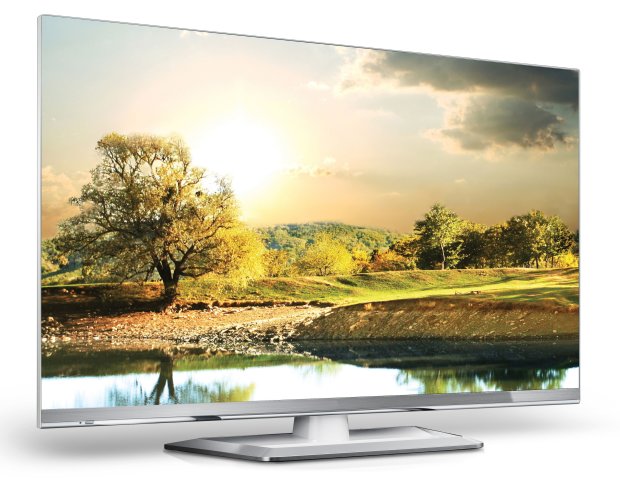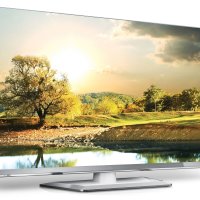Many people still use cathode ray tube, or CRT, TVs. These boxy sets take up a lot of space, cannot be viewed clearly from all angles and don’t display high-definition picture. If you and your family watch a lot of TV or play video games at home, investing in a flat-screen television is a smart choice.
Flat-screen TVs may look the same, but there are important differences in technology between different types of HDTVs. If you’re looking to buy a new television for your home or office, you might not be sure where to begin.
HDTV technology has improved dramatically in the few years since it was first introduced, and the variety of choices offered to the consumer can be overwhelming. Any of these options can be an excellent choice, but one may be a better fit for your needs than the others. Here is a brief guide to choosing the best television for your home.

How an LCD TV Works
LCD stands for liquid crystal display. LCD screens first became popular as computer monitors before being adapted as televisions. The screen consists of two sheets of polarized glass; sandwiched between these is a solution made of liquid crystals. The glass is back-lit by a fluorescent bulb.
When electrical current flows through the liquid, the crystals move, and the polarized glass allows certain wavelengths of light from the bulb to pass through. This creates thousands of tiny dots, or pixels, of color that ultimately make up the picture on an LCD TV.
Benefits and Drawbacks of an LCD TV
LCD TVs are a good choice for people looking for an affordable HDTV. They have a much better picture quality than old-fashioned CRT televisions, and they’re relatively light-weight. They’re also ideal for watching television in any light condition; they work equally well in dark or well-lit rooms.
One problem that some people have with LCD technology is that it is limited when compared to other types of HDTVs. The display has a low contrast ratio, and there is no way to get “true” black on the screen. This leads to LCD TVs having a slightly washed-out look that some people do not like.
Additionally, some of the crystals in the display can burn out, leading to “dead pixels” on the screen. These blank flecks are irreparable and can be very distracting. Because of this, LCD TVs are not as long-lived as other types of HDTV technology.
How a Plasma TV Works
Plasma TVs were developed in response to the weaknesses of LCD displays. Like LCD displays, a plasma screen TV has two panes of glass that make up the flat screen. Rather than using liquid crystals, plasma TVs have chambers filled with xenon and neon. When electricity runs through these chambers, the gas converts into plasma; as the plasma moves through the chamber, it emits photons that display in various colors.
Benefits and Drawbacks of a Plasma TV
Plasma televisions have excellent picture quality. The colors are very sharp and precise thanks to the reaction of gases, and the televisions also display very deep blacks. The screen can sometimes experience a “color burn” if they get a lot of use. When the television is turned off, a shadow of images may stay on the screen, and the color may be slightly faded in the areas that are burned.
Nevertheless, a plasma TV should last for approximately 60,000 hours of viewing time, which should offer ample life for most television viewers. Plasma TVs use less electricity than traditional CRTs, but they do have a slightly higher power draw than those using LCD or LED technology.
One of the primary drawbacks of plasma technology is its cost. These TVs are somewhat heavier than others of their kind, and they cost more to produce due to the use of noble gases. They are also prohibitively expensive to repair and sometimes cannot be repaired at all. Plasma TVs also look much better in low light than in bright light.
How an LED TV Works
The newest type of HDTV on the market uses LED technology. Similar to an LCD display, an LED screen utilizes a liquid crystal display sandwiched between two sheets of polarized glass. Rather than using a fluorescent back-light to illuminate the picture, however, LED screens use light emitting diodes. This makes LEDs more energy efficient and greatly improves picture quality.
Benefits and Drawbacks of an LED TV
LED TVs have better color contrast and brightness than either plasma or LCD displays. Blacks are deep and rich rather than seeming washed out, and the display is bright enough to watch in any light. They also draw less power than either LCD or plasma displays, and the energy efficiency helps to compensate for the technology’s fairly high cost.
The greatest drawback of an LED TV is its cost. Because the technology is new, it is more expensive than its competition. Additionally, LED TVs still sometimes suffer from the “dead pixel” issue that haunts LCD screens.
Putting it All Together: Which Television to Buy
The type of TV you choose will depend on what you’re watching, how often you watch TV, what conditions you’ll watch TV in and how much you’re willing to spend. The superior picture quality may make an LED or plasma display superior for some viewers, but the lower cost of LCD technology might be a selling point for some. If you’ll be watching your television during the day or in a bright area, you’ll want to avoid a plasma screen. If you want a rich, dark picture and cinematic experience in a darkened room, plasma might be the best choice.
The best way to buy a television may be to look at several different models and screen types to see how they look in person. You can also take the time to compare price tags and decide how much you’re willing to pay for the high picture quality. No matter what you choose, your new television will have a better picture than your old CRT set, and it will save you money on your energy bills for many years to come.
